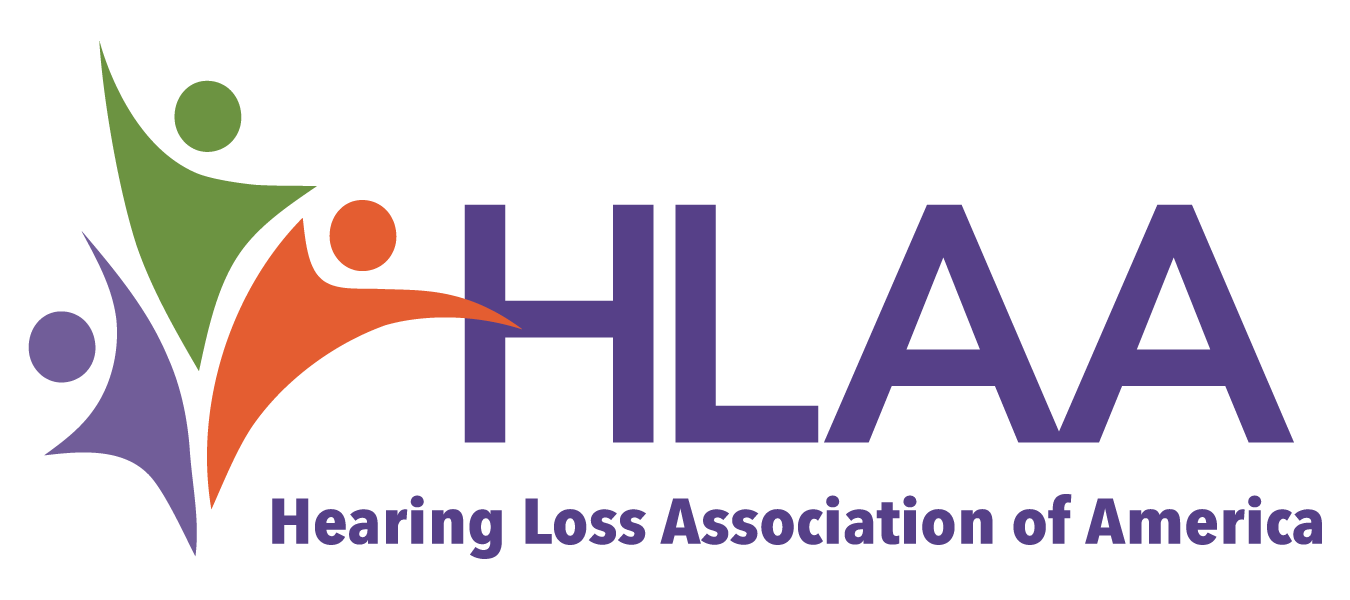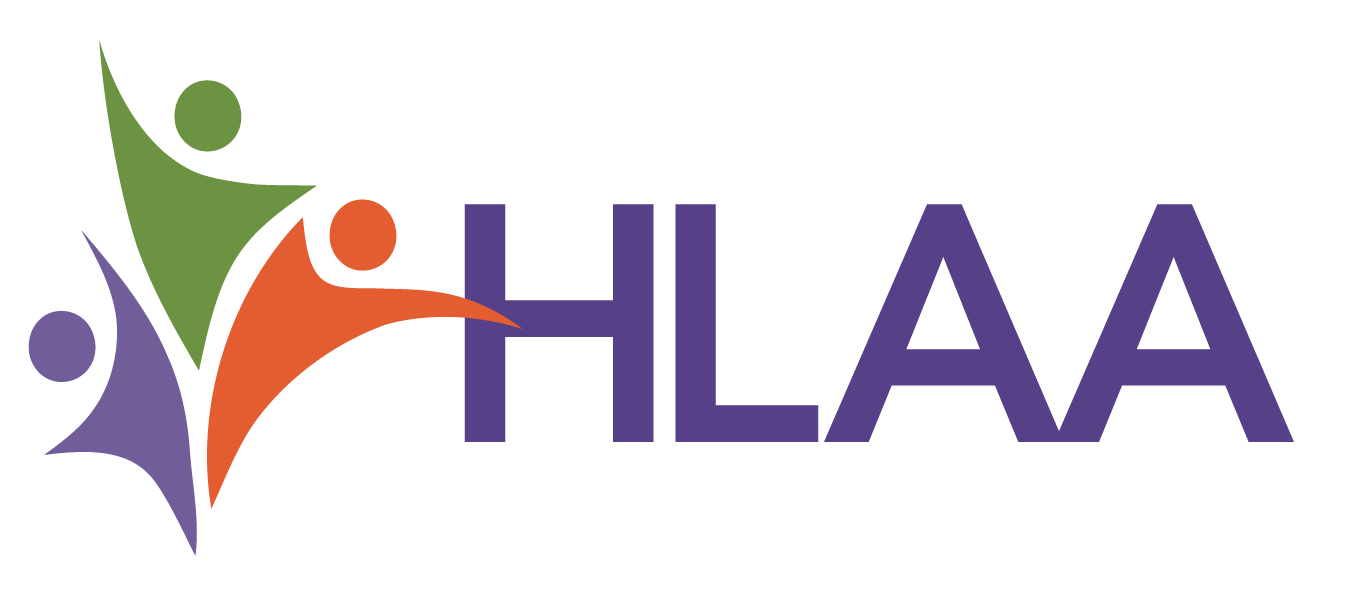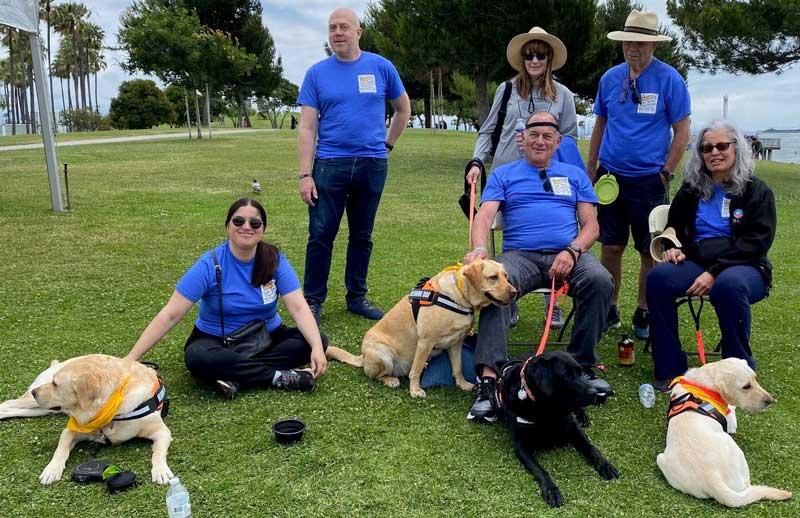
If you follow our social media accounts, you’ve probably seen our popular themed posts for #FurbabyFriday, which often highlight hearing dogs. Because we get a lot of questions on those, National Service Dog Month provides the perfect opportunity for a deeper dive on this topic!

“My life used to be like the first part of The Wizard of Oz movie, very sedentary and gray,” says Amy, a young bilateral cochlear implant recipient. “Since Mindy, my world has exploded in Technicolor!”
Mindy is Amy’s certified hearing assistance dog, who was trained by Dogs for Better Lives, a service animal training nonprofit with facilities in Medford, Oregon and Falmouth, Massachusetts.
“As my ‘second half,’ she makes me so much more aware of the world around me. All I need is to see her ears twitch to know if there’s something that requires a reaction. With Mindy by my side, I have the confidence to go out and enjoy life.”
Service Dogs in America
The modern use of dogs to assist individuals with disabilities dates to World War I, when guide dogs were trained to support visually impaired veterans. Over time, service dog functions expanded to assist people with various disabilities, including those who are deaf or hard of hearing. Specially trained hearing assistance dogs were first introduced in the United States in the late 1970s to enhance independence by providing essential auditory alerts as well as emotional support and companionship.
Today, a range of programs around the U.S. specialize in training and placing hearing assistance dogs with individuals in need—many at no cost to the recipient. This article highlights three organizations and provides additional resources you can visit for more information if you are considering the possibility of getting a hearing dog.
Saved By a Prince
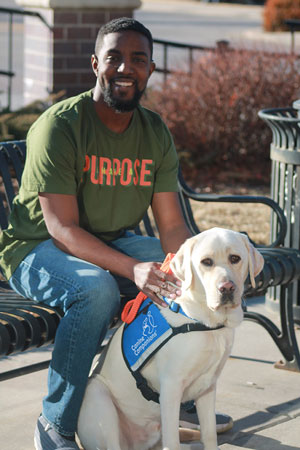
When Alex, an accomplished young baseball player with hearing loss, felt increased anxiety about missing important sounds and communications, he started withdrawing from activities and staying home, where everything was safe and familiar. His concerned family reached out to a regional office of Canine Companions and service dog Prince soon came into Alex’s life.
With Prince there to alert him to visitors at the door, a beeping alarm clock, friends calling his name and other sounds, Alex became more relaxed and regained his outgoing personality.
“The level of confidence and reassurance I feel with Prince is so impactful,” he says. Today, Alex is focused on coaching and encouraging other young athletes on the diamond.
Is a Hearing Dog Right for You?
If you, or a family member, are interested in obtaining a trained hearing assistance dog, start by learning about specific issues related to service animals, such as Americans with Disabilities Act (ADA) laws, where they are allowed, and more from the ADA National Network Service Animal Resource Hub. This can help you decide if a hearing dog is the right option for your specific needs and lifestyle.
If you choose to move forward, continue your research about various programs to find one that best fits your needs. Visit Assistance Dogs International for a comprehensive, searchable database of accredited service dog organizations. Each has different eligibility criteria, locations served, training procedures, dog breeds, waiting periods, etc. You should also decide if you require a Home Hearing Dog or a Certified Hearing Dog that is trained to support its partner in public environments.
As an alternative, some people choose to train their own service dogs, as described in this recent Healthy Hearing article, typically with the support of an organization such as Atlas Assistance Dogs.
Choosing Where to Apply
Here are a few suggested questions to consider as part of your decision-making process:
- Does the organization serve your area?
- What are their qualifications for a hearing dog?
- Is the individual in need an adult, child or veteran?
- How much is the financial commitment, if any?
- What is the training process? Is travel required at the client’s expense?
- How long is their waitlist?
- What are your veterinary and ongoing care responsibilities?
- Who retains ownership of the service dog?
- What size and type of dog do you prefer: large or small, purebred or shelter rescue?
- Which specific tasks are the hearing dogs trained to do?
- What is involved with their client matching process?
- Is the organization accredited?
The table below has basic information to get you started; visit each organization’s website for more details. Most provide hearing and other service dogs at no cost to the client, although some require a financial commitment that can be met through fundraising. Please note that this is not a comprehensive list; there may be additional organizations serving your area, and some information may have changed.
| Org. / Website | Where Based | Locations Served | Cost |
|---|---|---|---|
| Assistance Dogs–Sam Simon Foundation samsimonfoundation.com |
Malibu, CA | California, western Nevada, western Arizona |
Free to recipient |
| Canine Companions canine.org |
Six regional training facilities | Across the U.S. | Free to recipient |
| Dogs for Better Lives dogsforbetterlives.org |
Medford, OR & Falmouth, MA |
Across the U.S. | Free to recipient |
| International Hearing Dog, Inc. hearingdog.org |
Colorado | Throughout U.S. & Canada |
Free to recipient |
| Little Angels littleangelsservicedogs.org |
San Diego, Texas, New Hampshire |
New England, Texas & California |
$18,000; can be met through fundraising |
| NEADS neads.org |
Princeton, MA | Across the U.S. | Minimum of $8,000 through fundraising |
| Paws with a Cause pawswithacause.org |
Wayland, MI | Eastern U.S. & Phoenix, AZ |
Free to recipient; pay it forward fundraiser encouraged |
| paws4people paws4people.org |
Wilmington, NC | Throughout U.S. & Canada |
Free to recipient with pay it forward campaign |
Merlin’s Magic
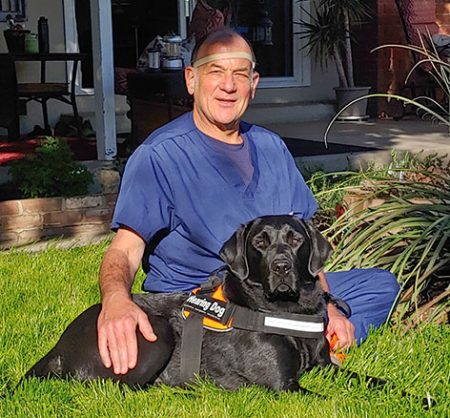
For most of his life, Stuart managed to get by with his progressive bilateral otosclerosis—until he couldn’t hear at all anymore, following several unsuccessful surgical attempts. After he inadvertently locked his wife out of the house for hours, and couldn’t hear her pounding on the door or calling on the phone, they started the search for a hearing support dog.
The southern California couple was delighted to discover The Sam Simon Foundation Assistance Dogs nearby in Malibu and soon three-year-old Merlin, a black Labrador retriever, joined their home and Stuart’s daily life.
“Merlin is a great comfort to me as my hearing loss has become profound,” Stuart shares. “He is basically an extension of me, acting as my ears. Prior to Merlin’s arrival, I was very isolated, and the difference in my life with him is huge. Now he is part of my family and I love him.”
Has a Hearing Dog Changed Your Life?
We want to hear from you, whether you’re just starting your hearing dog journey now or you’ve already invited a hearing service dog into your home. Send us some photos of you and your companion with their name, age, breed and how they have made your world better and easier to navigate…and you may both be featured in one of our future Furbaby Friday social media posts!

If you or someone you know has a hearing loss, visit hearingloss.org for resources and to find a local chapter, or a Walk4Hearing near you.
For questions, contact HLAA at inquiries@hearingloss.org.
Enjoyed this post? Never miss out on future posts by following us.
